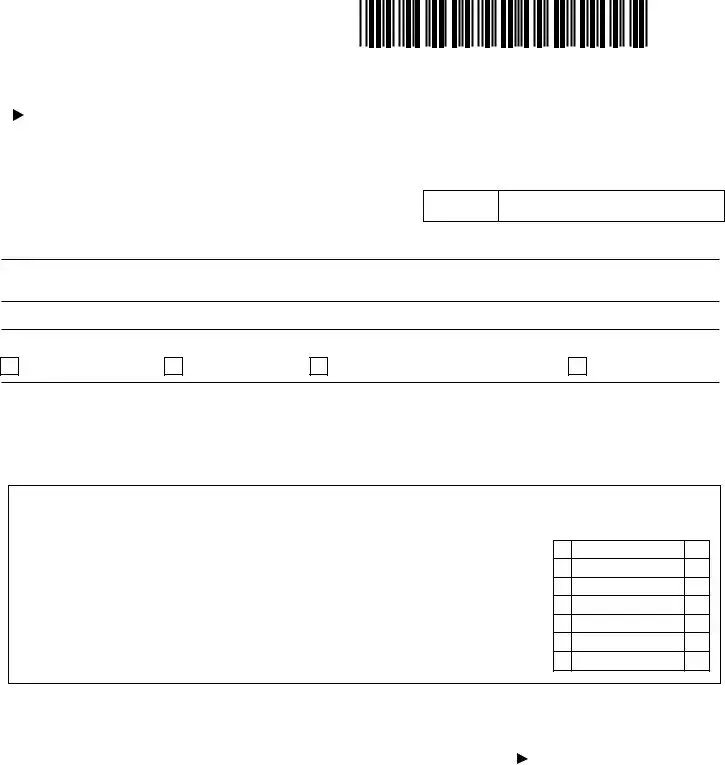Purpose of Form Form 510D is used by a pass- through entity (PTE) to declare and remit estimated tax.
General Requirements PTEs are required to pay tax on behalf of all nonresident members. For nonresident members that are individuals or nonresident fiduciaries, the tax is 5.75% in addition to the special nonresident tax of 1.25% of the nonresident member’s distributive or pro rata share of income. For nonresident entity members, the tax is 8.25% of the nonresident member’s distributive or pro rata share of income. A nonresident entity is an entity that is not formed under the laws of Maryland; and is not qualified by, or registered with the Department of Assessments and Taxation to do business in Maryland. The amount of tax due may be limited based on the distributable cash flow limitation. The Distributable Cash Flow Limitation worksheet is available in our PTE income tax booklet, which can be downloaded at www . marylandtaxes .com.
Certain PTEs meeting certain reporting requirements are exempt from the requirement to pay nonresident tax on behalf of its nonresident members. See instructions for Form 510 for more information.
When the tax is expected to exceed $1,000 for the tax year, the PTE must make quarterly estimated payments. The total estimated tax payments for the year must be at least 90% of the tax developed for the current tax year or 110% of the tax that was developed for the prior tax year to avoid interest and penalty.
In the case of a short tax period the total estimated tax required is the same as for a regular tax year: 90% of the tax that was developed for the current (short) tax year or 110% of the tax that was developed for the prior tax year. The minimum estimated tax for each of the installment due dates is the total estimated tax required divided by the number of installment due dates occurring during the short tax year. However, if the pass-through entity has a short tax period of less than 4 months it does not have to pay estimated tax nor file Form 510D.
Maryland law provides for the accrual of interest and imposition of penalty for failure to pay any tax when due.
If it is necessary to amend the estimate, recalculate the amount of estimated tax required using the estimated tax worksheet provided. Adjust the amount of the next installment to reflect any previous underpayment or overpayment. The remaining installments must be at least 25% of the amended estimated tax due for the year.
The PTE must issue a statement to each nonresident member showing the amount of tax paid on their behalf. Nonresident members must include the statement with their own income tax returns (Form 500, 504, 505 or 510) to claim credit for taxes paid on their behalf.
Tax Rate The current 2012 tax rate for nonresident individual members is 5.75% at the time this form was created. It is possible that the Maryland Legislature may change this tax when in session. Please check our Web site for updates at www .marylandtaxes .com.
When to File File Form 510D on or before the 15th day of the 4th, 6th, 9th and 12th months following the beginning of the tax year or period for S corporations or by the 4th, 6th, 9th and 13th months following the beginning of the tax year for partnerships, LLCs and business trusts.
Tax Year or Period The tax year is shown at the top of Form 510D. The form used for filing must reflect the preprinted tax year in which the PTE’s tax year begins.
If the tax year of the PTE is other than a calendar year, enter the beginning and ending dates of the fiscal year in the space provided at the top of Form 510D.
Name, Address, and Other Information Type or print the required information in the designated area.
Enter the exact PTE name with any “Trading As” (T/A) name if applicable.
Enter the federal employer identification number (FEIN). If the FEIN has not been secured, enter “APPLIED FOR” followed by the date of application. If a FEIN has not been applied for, do so immediately.
Filing electronically using Modernized Electronic Filing method (software provider must be approved by the IRS and Revenue Administration Division). If filed electronically, do not mail 510D; retain it with company’s records .
If you need to make additional payments for the current tax year you may file electronically, or you can go to
www.marylandtaxes .comand download another Form 510D. We have discontinued the use of preprinted quarterly estimated tax vouchers for PTEs.
Payment Instructions Include a check or money order made payable to Comptroller of Maryland. All payments must indicate the FEIN, type of tax and tax year beginning and ending dates. DO NOT SEND CASH.
Mailing Instructions Mail the completed Form 510D and payment to:
Comptroller of Maryland
Revenue Administration Division
110 Carroll Street
Annapolis, MD 21411-0001

 12
12